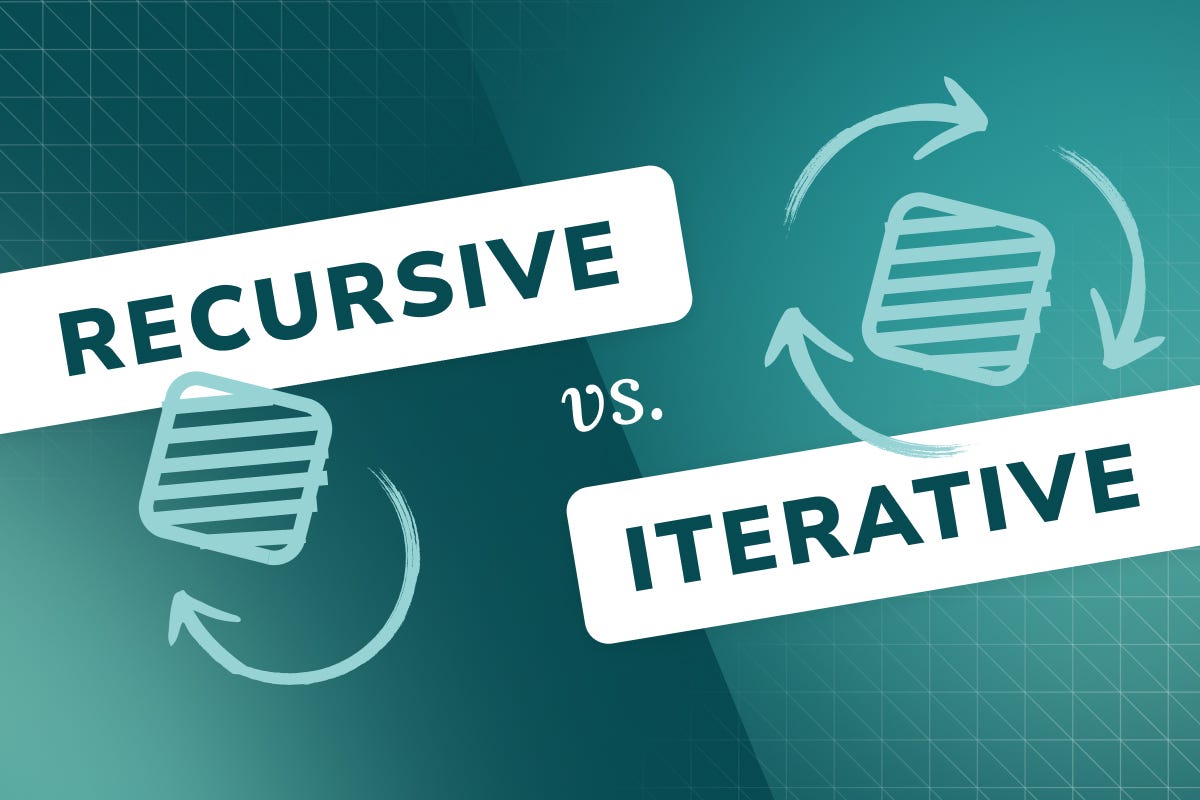Programming involves solving problems—and how we structure those solutions matters. Two primary approaches often used to tackle tasks that involve repetition or repeated steps are recursion and iteration. While both can be used to achieve the same goals, they do so with different philosophies and techniques.
This article delves deep into the concept of recursion and iteration, focusing on how they work, their pros and cons, and when to use each. Along the way, we’ll use JavaScript for demonstrations and explain these ideas not just theoretically but with real-world relevance.
What is Recursion?
Sponsored
Recursion occurs when a function calls itself directly or indirectly to solve a smaller instance of the same problem. It breaks a problem into sub-problems of the same type until it reaches a base condition—this is what stops the recursion from continuing indefinitely.
Imagine standing between two mirrors and seeing endless reflections. That’s recursion: a function seeing its own reflection through its calls.
Basic Recursion Example
One of the most classic recursive examples is calculating a factorial:
function factorial(n) {
if (n === 0) {
return 1;
}
return n * factorial(n - 1);
}
console.log(factorial(5)); // 120In this example, the function calls itself until it reaches the base case (n === 0). The key here is to make sure that the recursive call moves closer to that base case to avoid infinite recursion.
What is Iteration?
Iteration uses constructs like for, while, or do...while loops to repeat a block of code until a condition is met. It doesn’t require multiple function calls, making it generally more memory-efficient than recursion.
Basic Iteration Example
Here’s how you would calculate the factorial iteratively:
function factorialIterative(n) {
let result = 1;
for (let i = 2; i <= n; i++) {
result *= i;
}
return result;
}
console.log(factorialIterative(5)); // 120Comparing Recursion and Iteration
While recursion and iteration both achieve repeated execution, they differ in how they do it. Recursion uses the call stack—each function call adds a new frame to the stack. Iteration, on the other hand, uses loop constructs and minimal additional memory.
Let’s look at the Fibonacci sequence:
Recursive Fibonacci
function fibonacciRecursive(n) {
if (n <= 1) return n;
return fibonacciRecursive(n - 1) + fibonacciRecursive(n - 2);
}
console.log(fibonacciRecursive(6)); // 8Iterative Fibonacci
function fibonacciIterative(n) {
if (n <= 1) return n;
let prev = 0;
let curr = 1;
for (let i = 2; i <= n; i++) {
[prev, curr] = [curr, prev + curr];
}
return curr;
}
console.log(fibonacciIterative(6)); // 8The recursive version is easier to understand but less efficient due to redundant calculations. This is why in real-world systems, iterative solutions are often preferred unless recursion provides a significant design advantage.
Tail Recursion and Optimization
Some modern JavaScript engines optimize tail-recursive functions. A tail-recursive function is one where the recursive call is the last operation in the function. In theory, this allows the engine to reuse the same stack frame, avoiding stack overflows.
Here’s a tail-recursive version of factorial:
function factorialTailRec(n, acc = 1) {
if (n === 0) return acc;
return factorialTailRec(n - 1, n * acc);
}
console.log(factorialTailRec(5)); // 120Note: Not all JavaScript environments support tail-call optimization, but understanding it is crucial if you’re working in languages that do (e.g., Scheme or newer ES implementations).
When to Use Recursion
Recursion shines when problems have a naturally recursive structure. These include:
- Tree and graph traversal (e.g., DOM, file system)
- Divide-and-conquer algorithms (e.g., Merge Sort, Quick Sort)
- Problems defined in terms of themselves (e.g., mathematical sequences)
Consider navigating a file system:
function listFiles(folder) {
console.log(`Folder: ${folder.name}`);
folder.files.forEach(file => {
if (file.type === 'folder') {
listFiles(file);
} else {
console.log(`File: ${file.name}`);
}
});
}This is recursive in nature and would be awkward with plain iteration.
When to Use Iteration
Iteration is preferred when performance and memory are critical. It avoids function call overhead and stack overflow risks. Iteration is also easier to debug in some cases and often translates directly into assembly or lower-level operations, making it more efficient.
Iterative logic is ideal for:
- Processing lists and arrays
- Counting and accumulation tasks
- Long-running calculations
Real-World Analogy
Think of recursion as a chain of command. Each person delegates a task to the next until someone at the bottom finishes the job and reports back up. Iteration, on the other hand, is like a single person doing the task step-by-step.
Both have their place. Recursion may be more elegant and easier to understand in some situations, but iteration is often faster and safer.
Recursion with Memoization
Recursive functions can be improved with memoization—caching previously computed results to avoid redundant work.
function fibonacciMemo() {
const memo = {};
return function fib(n) {
if (n in memo) return memo[n];
if (n <= 1) return n;
memo[n] = fib(n - 1) + fib(n - 2);
return memo[n];
};
}
const fib = fibonacciMemo();
console.log(fib(6)); // 8Memoization is particularly helpful in dynamic programming problems.
Stack Overflow: A Real Risk
If recursion goes too deep without hitting a base case, it will crash with a stack overflow error. Consider:
function infiniteRecursion() {
return infiniteRecursion();
}
// infiniteRecursion(); // Uncommenting this will crash the call stackAvoiding infinite recursion is critical. Always ensure that a base case exists and that each recursive step brings the problem closer to it.
Recursion vs Iteration in Interviews
In coding interviews, recursion often comes up in problems involving trees, backtracking, and dynamic programming. Interviewers assess your ability to think recursively, even if the solution is later optimized with iteration or memoization.
Being fluent in both styles, and knowing when to use each, sets you apart as a strong developer.
Conclusion
Recursion and iteration are two sides of the same coin. Mastering both allows you to tackle a wide range of problems with elegance and efficiency. While recursion offers a clean, expressive way to solve self-referential problems, iteration delivers performance and clarity in linear tasks.
In JavaScript, the choice between them should be guided by problem structure, performance needs, and code readability. As with all programming techniques, experience and practice will help you make the right call in different scenarios.



